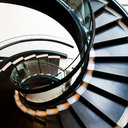Remission induction of ANLL with low dose cytosine arabinoside combined with retinoic acid.
Mots clés
Abstrait
Fourteen cases of acute non-lymphocytic leukemia (ANLL) were treated with low doses of cytosine arabinoside (LDAra-C 20 mg/m/q12h) and etretinate (all-trans-9-3, 7-dimethyl-2, 4, 6, 8 non-atetraenoate, 75 mg/d). Of which 9 were untreated, 3 were in first relapse and 2 were refractory patients. Five of the 9 patients in the first group, and all 3 patients in the second group achieved complete remission (CR). The 2 cases with refractory ANLL showed no response. The CR rates in untreated, first relapse and refractory patients were 55.6%, 100%, and 0% respectively. In all, there was significant reduction of marrow cellularity in 13 patients, 5 of whom developed bone marrow aplasia with predominantly lymphocyte and plasma cells. Only 2 cases with M5 ANLL showed evidence of differentiating into monocytes and neutrophil in hypocellular marrow phase. The efficacy of this drug combination, however, appeared to be achieved through cytotoxicity rather than differentiation. The side effects in the treated cases included cheilitis, dermatitis, fever, petechiae, and impaired liver function, which soon improved upon discontinuation or reduction of dosage. This combination treatment might be most effective in achieving remission among elderly and severely infected patients with ANLL, and could be appropriate even for patients in first relapse.



